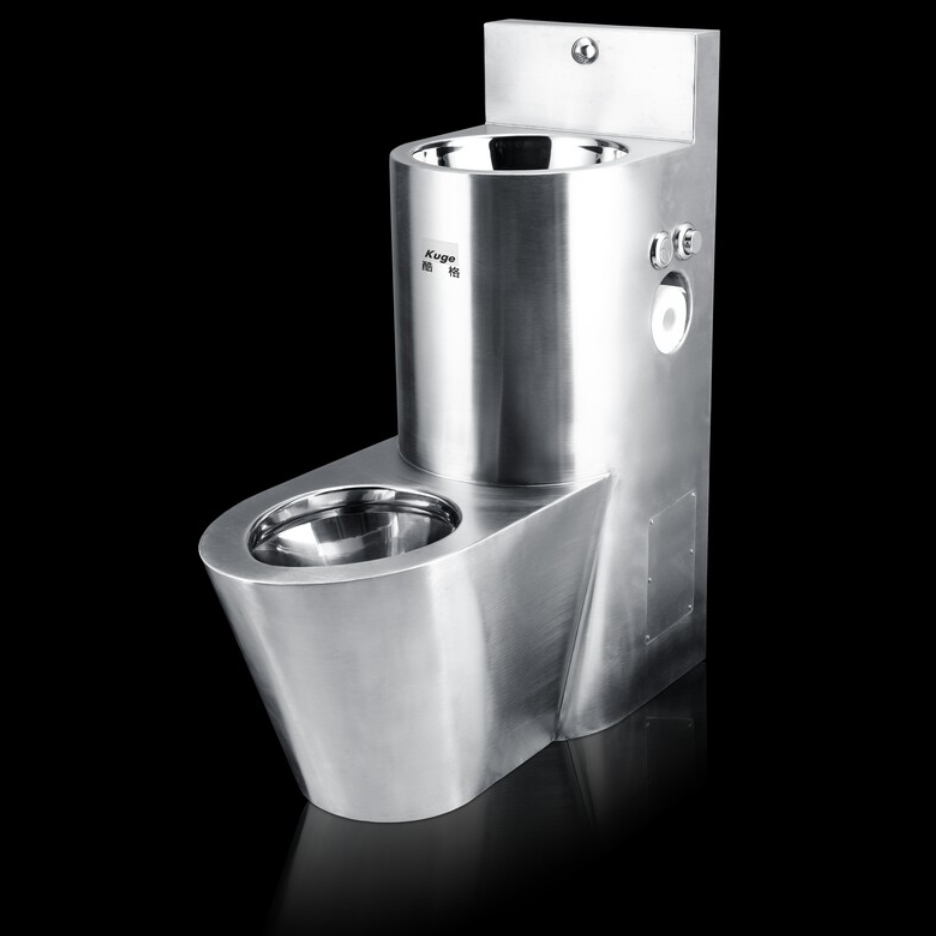When it comes to designing bathrooms for high-traffic environments, the choice of materials is crucial. While ceramic might be a popular choice for household bathrooms due to its aesthetic appeal, stainless steel stands out as the superior option for environments that endure heavy use. This article will delve into why stainless steel is more suitable for high-traffic scenes compared to ceramic, focusing on key factors such as durability, hygiene, and maintenance.
Durability: The Power of Stainless Steel
Stainless steel is renowned for its durability and strength. In high-traffic environments such as public restrooms, airports, schools, and stadiums, fixtures need to withstand frequent use and potential misuse. Stainless steel toilets and fixtures are designed to be robust and resilient, making them less susceptible to cracks, chips, and other forms of damage that can plague ceramic alternatives.
Resistance to Vandalism
In public settings, vandalism can be a significant concern. Stainless steel's tough exterior acts as a deterrent to vandalism, as it is not easily damaged by scratches or impact. This makes stainless steel toilets particularly advantageous for environments where maintaining the integrity of the facilities is a priority.
Long-lasting Investment
While the initial cost of stainless steel fixtures might be higher than ceramic, the long-term savings are notable. Stainless steel products do not require frequent replacements or repairs, translating to cost savings over time. This makes them a wise investment for facilities that experience continuous use.
Hygiene: A Cleaner Choice

In any restroom setting, hygiene is a critical consideration. Stainless steel offers several hygiene advantages over ceramic, making it a preferred choice for high-traffic environments.
Non-porous Surface
Stainless steel has a non-porous surface, which means it does not absorb bacteria, germs, or odors. This is in stark contrast to ceramic, which can harbor bacteria in its porous surface, making it harder to clean thoroughly. The non-porous nature of stainless steel makes it easier to maintain a hygienic and odor-free environment.
Easy to Clean
Stainless steel toilets and fixtures are easy to clean, requiring minimal effort to maintain their appearance and hygiene. Regular cleaning with mild detergents keeps the surface shiny and sanitary, reducing the time and effort required for maintenance staff.
Maintenance: Simplified Care
The maintenance of restroom facilities is a significant concern in high-traffic environments. Stainless steel offers several maintenance benefits over ceramic, contributing to its suitability for such settings.
Resistance to Stains and Corrosion
Stainless steel is resistant to stains and corrosion, which is particularly beneficial in environments exposed to water and cleaning agents. Ceramic, on the other hand, can become stained over time, diminishing its appearance and requiring more intensive cleaning.
Temperature and Humidity Resilience
Stainless steel's resistance to extreme temperatures and humidity makes it ideal for various environments. Whether in a humid locker room or a restroom exposed to temperature fluctuations, stainless steel remains unaffected, whereas ceramic may crack or become compromised under such conditions.
Stainless Steel Toilets Applications
Stainless steel toilets are versatile and can be used in various high-traffic settings. Some notable applications include:
Security and Correctional Facilities
Security toilets made from stainless steel are essential in correctional facilities. Their robust construction prevents tampering and misuse, ensuring the safety of both inmates and staff.
Schools and Universities
Educational institutions benefit from the durability and hygiene of stainless steel toilets. They withstand the rigors of student use while maintaining a clean and safe environment.
Commercial and Public Restrooms
In malls, airports, and other public spaces, stainless steel toilets are a practical choice. They handle high volumes of use while remaining easy to clean and maintain.
Healthcare Facilities
In healthcare settings, the need for hygiene is paramount. Stainless steel toilets are non-porous and easy to sanitize, making them ideal for hospitals and clinics.
Bariatric Toilets: Meeting Diverse Needs
Bariatric toilets, designed to support higher weight capacities, are often constructed from stainless steel. These toilets offer the strength and durability required to accommodate diverse user needs, ensuring safety and comfort for all individuals.
